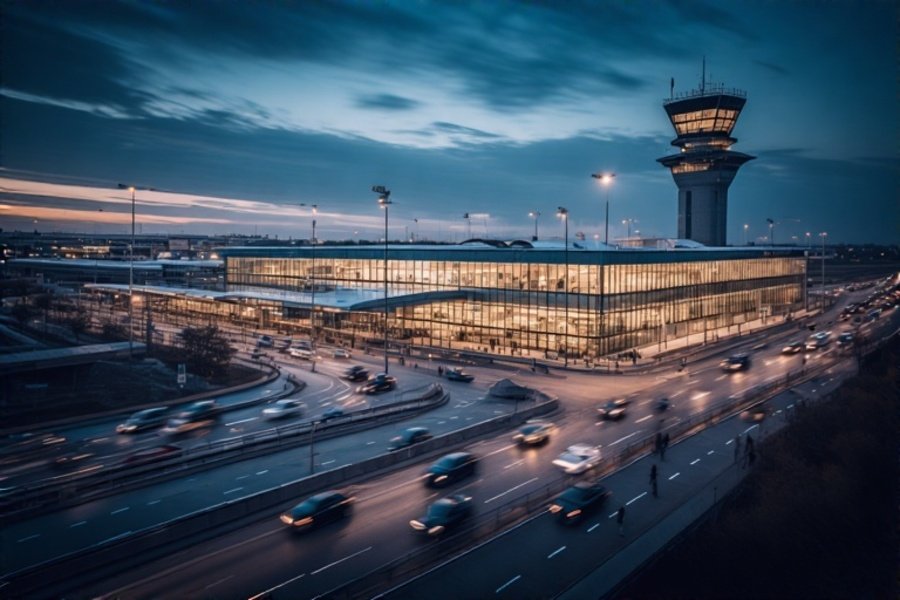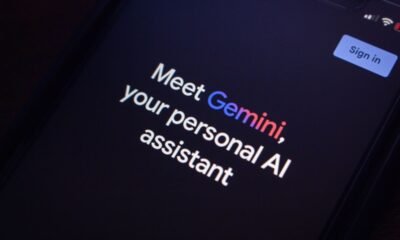AI in Travel
AI in Corporate Travel: BCD Focuses on the Plumbing, Not the Flash – Skift

AI in Travel
Top Skills Data Scientists Should Learn in 2025


Image by Author | Canva
# Introduction
I understand that with the pace at which data science is growing, it’s getting harder for data scientists to keep up with all the new technologies, demands, and trends. If you think that knowing Python and machine learning will get the job done for you in 2025, then I’m sorry to break it to you but it won’t.
To have a good chance in this competitive market, you will have to go beyond the basic skills.
I’m not only referring to tech skills but also the soft skills and business understanding. You might have come across such articles before, but trust me this is not a clickbait article. I HAVE actually done research to highlight those areas which are often overlooked. Please note that these recommendations are purely based on industry trends, research papers, and insights I gathered from talking to a few experts. So, let’s get started.
# Technical Skills
// 1. Graph Analytics
Graph analytics is super underrated but so useful. It helps you understand relationships in data by turning them into nodes and edges. Fraud detection, recommendation systems, social networks, or anywhere things are connected, graphs can be applied. Most traditional machine learning models struggle with relational data, but graph techniques make it easier to catch patterns and outliers. Companies like PayPal use it to identify fraudulent transactions by analyzing relationships between accounts. Tools like Neo4j, NetworkX, and Apache AGE can help you visualize and work with this kind of data. If you’re serious about going deeper into areas like finance, cybersecurity, and e-commerce, this is one skill that’ll make you stand out.
// 2. Edge AI Implementation
Edge AI is basically about running machine learning models directly on devices without relying on cloud servers. It’s super relevant now that everything from watches to tractors is getting smart. Why does this matter? It means faster processing, more privacy, and less dependency on internet speed. For example, in manufacturing, sensors on machines can predict failures before they happen. John Deere uses it to detect crop diseases in real-time. In healthcare, wearables process data instantly without needing a cloud server. If you’re interested in Edge AI, look into TensorFlow Lite, ONNX Runtime, and protocols like MQTT and CoAP. Also, think about Raspberry Pi and low-power optimization. According to Fortune Business Insights,Edge AI market will grow from USD 27.01 billion in 2024 to USD 269.82 billion by 2032 so yeah, it’s not just hype.
// 3. Algorithm Interpretability
Let’s be real, building a powerful model is cool, but if you can’t explain how it works? Not that cool anymore. Especially in high-stakes industries like healthcare or finance, where explainability is a must. Tools like SHAP and LIME help break down decisions from complex models. For example, in healthcare, interpretability can highlight why an AI system flagged a patient as high-risk, which is critical for both ethical AI use and regulatory compliance. And sometimes it’s better to build something inherently interpretable like decision trees or rule-based systems. As Cynthia Rudin, an AI researcher at Duke University, puts it: “Stop explaining black box machine learning models for high stakes decisions and use interpretable models instead.” In short, if your model affects real people, interpretability isn’t optional, it’s essential.
// 4. Data Privacy, Ethics, and Security
This stuff isn’t just for legal teams anymore. Data scientists need to understand it too. One wrong move with sensitive data can lead to lawsuits or fines. With privacy laws like CCPA and GDPR, it’s now expected that you know about techniques like differential privacy, homomorphic encryption, and federated learning. Ethical AI is also getting serious attention. In fact, 78% of surveyed consumers believe companies must commit to ethical AI standards, and 75% say trust in a company’s data practices directly influences their purchasing decisions. Tools like IBM’s Fairness 360 can help you test bias in datasets and models. TL;DR: If you’re building anything that uses personal data, you better know how to protect it, and explain how you’re doing that.
// 5. AutoML
AutoML tools are becoming a solid asset for any data scientist. They automate tasks like model selection, training, and hyperparameter tuning, so you can focus more on the actual problem, rather than getting lost in repetitive tasks. Tools like H2O.ai, DataRobot, and Google AutoML help speed things up a lot. But don’t get it twisted, AutoML isn’t about replacing you, it’s about boosting your workflow. AutoML is a copilot, not the pilot. You still need the brains and context, but this can handle the grunt work.
# Soft Skills
// 1. Environmental Awareness
This might surprise some, but AI has a carbon footprint. Training massive models takes up crazy amounts of energy and water. As a data scientist, you have a role in making tech more sustainable. Whether it’s optimizing code, choosing efficient models, or working on green AI projects, this is a space where tech meets purpose. Microsoft’s “Planetary Computer” is a great example of using AI for environmental good. As MIT Technology Review puts it: “AI’s carbon footprint is a wake-up call for data scientists.” In 2025, being a responsible data scientist includes thinking about your environmental impact as well.
// 2. Conflict Resolution
Data projects often involve a mix of people: engineers, product folks, business heads, and trust me, not everyone will agree all the time. That’s where conflict resolution comes in. Being able to handle disagreements without stalling progress is a big deal. It ensures that the team stays focused and moves forward as a unified group. Teams that can resolve conflicts efficiently are simply more productive. Agile thinking, empathy, and being solution-oriented are huge here.
// 3. Presentation Skills
You could build the most accurate model in the world, but if you can’t explain it clearly, it’s not going anywhere. Presentation skills especially explaining complex ideas in simple terms are what separate the great data scientists from the rest. Whether you’re talking to a CEO or a product manager, how you communicate your insights matters. In 2025, this isn’t just a “nice to have”, it’s a core part of the job.
# Industry-Specific Skills
// 1. Domain Knowledge
Understanding your industry is key. You don’t need to be a finance expert or a doctor, but you do need to get the basics of how things work. This helps you ask better questions and build models that actually solve problems. For example, in healthcare, knowing about medical terminology and regulations like HIPAA makes a huge difference in building trustworthy models. In retail, customer behavior and inventory cycles matter. Basically, domain knowledge connects your technical skills to real-world impact.
// 2. Regulatory Compliance Knowledge
Let’s face it, data science is no longer a free-for-all. With GDPR, HIPAA, and now the EU’s AI Act, compliance is becoming a core skill. If you want your project to go live and stay live, you need to understand how to build with these regulations in mind. A lot of AI projects are delayed or blocked just because no one thought about compliance from the start. With 80% of AI projects in finance facing compliance delays, knowing how to make your systems auditable and regulation-friendly gives you a serious edge.
# Wrapping Up
This was my breakdown based on the research I’ve been doing lately. If you’ve got more skills in mind or insights to add, I’d honestly love to hear them. Drop them in the comments below. Let’s learn from each other.
Kanwal Mehreen is a machine learning engineer and a technical writer with a profound passion for data science and the intersection of AI with medicine. She co-authored the ebook “Maximizing Productivity with ChatGPT”. As a Google Generation Scholar 2022 for APAC, she champions diversity and academic excellence. She’s also recognized as a Teradata Diversity in Tech Scholar, Mitacs Globalink Research Scholar, and Harvard WeCode Scholar. Kanwal is an ardent advocate for change, having founded FEMCodes to empower women in STEM fields.
AI in Travel
US Transforms Travel Experience with New AI Powered TSA Solutions, Ushering in a Smarter Era of Security: What You Need to Know

Monday, July 28, 2025
The US is paving the way for a more intelligent approach to airport security with AI tools developed by the TSA. By leveraging new technologies such as AI, automation, and robotics, the TSA hopes to make the security process faster and safer than ever. This revolutionary move will bring faster, safer and more efficient travel to passengers across the country. Here’s what to know about these seismic changes.
The Motivation Behind the Shift
Airports across the United States have been facing growing pressure as air travel continues to expand. With millions of passengers traveling daily, security lines have become longer, and wait times have been increasing. For the TSA, this situation has created a need for significant change. To address these challenges and improve security procedures, the TSA is turning to technological solutions that can enhance efficiency while ensuring the highest standards of safety.
The implementation of AI and automation aims to eliminate many of the inefficiencies in the current system. By using cutting-edge technologies, the TSA hopes to reduce the time passengers spend at checkpoints, enhance the detection of security threats, and allow agents to focus on more complex aspects of screening.
How AI and Automation Will Revolutionize Security Screening
The new TSA vision is centered around incorporating AI-driven threat detection systems, robotic assistance, and automated baggage screening. Traditional security systems often rely on human operators to manually inspect images from X-ray machines, which can be time-consuming and prone to error. AI, however, offers the ability to quickly and accurately assess large volumes of data from security scans, identifying potential threats in real time. This will not only enhance the accuracy of threat detection but also make the process much faster.
Alongside AI, automation will be implemented to handle routine tasks. For example, robotic systems can assist in screening carry-on luggage and guiding passengers through the security process. This will free up TSA staff to focus on more critical tasks, like ensuring the safety of travelers and responding to potential security risks. As a result, the overall screening process will become more efficient, reducing long queues and wait times that have plagued passengers in the past.
The Benefits of AI-Driven TSA Security
The integration of AI and robotics promises to bring multiple advantages for both passengers and airport staff. One of the most notable improvements will be the reduction in wait times. With faster screening powered by AI, passengers will experience less time spent in lines, creating a smoother and more stress-free journey through security checkpoints. This will be especially beneficial during peak travel periods when airports are crowded.
Moreover, AI will enhance the precision of security checks. The technology’s ability to analyze data in real-time means potential threats can be identified and addressed more effectively, helping TSA agents to prevent dangerous items from boarding flights without disrupting the flow of passengers.
Additionally, the automation of certain security tasks will allow TSA agents to concentrate on more complex responsibilities, such as managing critical security situations and providing customer service. This shift is expected to improve overall airport operations and employee satisfaction.
Addressing Concerns: Job Impact and Data Privacy
While the TSA’s use of AI and automation in security has been met with excitement, some concerns have been raised about the potential displacement of jobs. With robots and automated systems taking over routine tasks, there is a worry that TSA personnel may be replaced. However, TSA officials stress that the goal is not to eliminate human workers but to enhance the role of security agents by enabling them to focus on higher-level tasks that require judgment and experience.
Additionally, as AI-driven solutions take a central role in security, data privacy concerns have also surfaced. Passengers’ personal and biometric information may be collected during the security process, prompting questions about how this data is used and stored. TSA officials have assured the public that strict data protection protocols will be in place to safeguard passenger privacy, but these concerns will need to be monitored closely as AI solutions become more integrated into the process.
The Path Forward: A More Secure and Efficient Future
AI in TSA security is just the start of the entire transformation of the aviation industry. And as these technologies continue to develop, travelers can look forward to even more efficient and intelligent security procedures to finally help us all out at the airport. The shift towards automation and AI may signal the beginning of a new era in the operations field of airports, where technology becomes a complement for human expertise, leading to a more efficient travel experience.
Over the next few years, TSA will be rolling that technology out to more airports nationwide so travelers have easier and more convenient options for ensuring their security while making their way to their destination. AI in integration with robotics will change the shape of airport security in future – it will be smarter, faster and more dependable – with journey that is less-inconvenient.
At the end of the day, the TSA’s effort to support innovation and technology as it applies to air travel is an important step toward responding to the dynamic needs and changes that regularly rock the aviation industry. And as these AI-based advances transform the face of airport security, both passengers and personnel will experience a more secure, timely and stress-free trip.
AI in Travel
How Is Consumer-Driven AI Innovation Radically Transforming the Future of the Global Travel Industry and What Critical Steps Must Companies Take Today to Adapt, Evolve, and Thrive in This Accelerating Digital Era? Here’s Everything You Need to Understand and Prepare for What’s Next

Monday, July 28, 2025
The Road Ahead: Evolve or Fall Behind
At a pivotal event in Barcelona, industry professionals pointed out that the rapid rise of artificial intelligence (AI) isn’t something approaching—it’s already here. Its influence is being felt in the hands of individual users rather than within traditional corporate or governmental circles. Experts warned that travel businesses that fail to adapt swiftly and meaningfully risk falling behind as the global travel landscape continues to shift. It was emphasized that while embracing AI is essential, thoughtful implementation is even more critical. Companies must remain bold, flexible, and deeply connected to how real people use technology in their daily lives.
Those leading voices conveyed a collective sense of urgency, not panic, indicating that companies that are willing to evolve in step with technological progress will be more likely to thrive rather than merely survive. What was stressed above all is this: now is the time to act.
Actionable Insights for the Travel Sector
During the sessions in Barcelona, several important takeaways were offered for companies operating within the travel space. The insights were grounded in real-time consumer behavior and the growing impact of AI:
- AI development is no longer led by institutions—it’s consumer-driven.
- Travel businesses must adopt flexible, forward-thinking approaches.
- The value of travel must now prioritize authentic experiences over routine logistics.
- A culture of digital exploration and adaptability is essential.
These ideas underscored a broader truth: the pace of change in technology, particularly in AI, is not slowing down. It is continuous, disruptive, and powered by users themselves. Businesses that harness this energy through strategic foresight and cultural agility will be far better positioned to lead.
Responsibility Must Go Hand-in-Hand with Innovation
The event didn’t solely revolve around AI’s capabilities—it also highlighted what AI should do. As travel companies integrate smarter systems into their customer journeys, they’re being called to prioritize ethical choices alongside technological ones.
The shift toward AI means massive quantities of personal data are now involved in decision-making and travel planning. With that, travel providers were urged to:
- Safeguard the human element in every trip.
- Promote transparency and fairness in algorithm-based systems.
- Design experiences that are authentic and respectful.
It was highlighted that the most successful travel organizations will not necessarily be those that are the first to launch AI tools, but those that implement them ethically and in alignment with human values. The emphasis was on crafting real experiences, not just efficient ones.
A New Kind of Travel Experience for the World
As AI becomes more integrated into everyday life, it’s already changing how global travelers approach their journeys. According to discussions in Barcelona, the transformation is happening across various touchpoints in real time. These changes include:
- Highly personalized itineraries created through AI, removing the need for manual trip planning.
- Real-time assistance via chatbots and voice-enabled tools, enabling travelers to resolve issues instantly.
- Intelligent booking systems that adjust based on user behavior, providing dynamic pricing and customized offers.
While these advancements bring efficiency and convenience, they also introduce complex questions regarding data privacy, digital consent, and cybersecurity. Travelers are being given more control, but they must also become more cautious. It was advised that a balance must be struck between embracing intelligent systems and safeguarding one’s digital footprint.
Reevaluating the Purpose of Travel in the AI Era
Speakers at the gathering encouraged participants to reflect on a deeper question: What does travel mean when AI handles most of the process? If machines manage bookings, maps, and even real-time conversations, what’s left for the traveler?
It was widely agreed that technology cannot replace emotion, spontaneity, or human connection. These are the elements that make travel memorable and transformative. In response to increasing automation, the travel sector was urged to shift focus from logistics to meaningful, culturally rich, and human-centered experiences.
As AI makes travel easier and more accessible, companies must take responsibility for ensuring it doesn’t become impersonal. The future of travel lies not in moving people from point A to B faster, but in offering enriching experiences that resonate long after the journey ends.
Staying Relevant in an Accelerating Tech Landscape
One recurring concern voiced in Barcelona was the unrelenting speed at which AI is evolving. Attendees were told that by the time a company implements and launches a new AI tool, newer, more advanced versions may already be available. This makes it challenging for companies to keep up.
To remain competitive and responsive in this environment, it was recommended that organizations follow a two-pronged approach:
- Adopt and integrate existing AI technologies that align with current goals and operations.
- Simultaneously, invest in teams or leaders focused solely on emerging AI trends, allowing for continuous awareness and quick adaptation.
This balance helps companies avoid stagnation. It means operating efficiently today while maintaining a clear vision of tomorrow. The phrase often repeated during these sessions was that organizations must keep “one foot in the future” at all times.
The Rise of Consumer-Led Innovation
A central point that emerged from the discussions in Barcelona was the idea that innovation is now being led by the consumer, not by corporations or research labs. Regular travelers and tech-savvy individuals are actively experimenting with AI tools to enhance how they travel—sometimes in ways that large companies had not anticipated.
Whether it’s through creating personalized travel plans, solving problems through digital assistants, or using AI to explore destinations before visiting, consumers are setting new standards. Businesses are no longer at the forefront; they are reacting to what users are already doing.
For the travel industry, this means abandoning rigid models and embracing adaptive, fluid systems. Companies were advised to build environments that reward creativity, tolerate risk, and encourage constant learning.
A Major Departure from the Traditional Innovation Path
In the past, technological revolutions often began in military or government sectors, slowly made their way into private industry, and eventually reached consumers. However, AI has flipped that model entirely. In today’s landscape, individuals are using AI before many corporations have even begun full-scale implementations.
This bottom-up shift was described as highly unusual but powerful. People around the globe are independently utilizing AI for trip planning, content generation, language translation, and real-time support. These uses are becoming more creative and personalized, pushing companies to reassess how they innovate.
Industry professionals agreed that the old hierarchies of innovation are collapsing, making way for a more democratic, consumer-led evolution.
Beginning of a New Era: How AI is Changing the Face of Travel
In Barcelona, during a high-level industry gathering, the impact of artificial intelligence on travel took center stage. The conversation wasn’t just about technology—it was about how the adoption of AI is unlike anything seen before.
Unlike past innovations that trickled down from elite labs and institutions, AI is taking root in everyday life first. This reversed adoption curve is redefining how businesses engage with travelers. For those in tourism, it means looking outward toward the behaviors and needs of the consumer, rather than relying solely on internal development.
Companies were encouraged to accept that innovation is no longer linear or controlled, and instead, it is messy, fast-paced, and driven by end-users. This demands an entirely new mindset—one that welcomes rapid change, continuous adaptation, and human-first design.
Final Thought
The ideas shared in Barcelona revealed a significant inflection point for the global travel industry. Artificial intelligence is not simply another tool—it is a transformative force that is altering how journeys are imagined, planned, and experienced.
Travel companies are being urged to rethink not just their operations, but their purpose. As AI accelerates, the message was crystal clear: the future will belong to those willing to innovate boldly, adapt constantly, and stay deeply connected to the human spirit that makes travel meaningful.
-

 Brand Stories1 week ago
Brand Stories1 week agoBloom Hotels: A Modern Vision of Hospitality Redefining Travel
-

 Brand Stories3 days ago
Brand Stories3 days agoCheQin.ai sets a new standard for hotel booking with its AI capabilities: empowering travellers to bargain, choose the best, and book with clarity.
-

 Destinations & Things To Do1 week ago
Destinations & Things To Do1 week agoUntouched Destinations: Stunning Hidden Gems You Must Visit
-

 AI in Travel1 week ago
AI in Travel1 week agoAI Travel Revolution: Must-Have Guide to the Best Experience
-

 Brand Stories3 weeks ago
Brand Stories3 weeks agoVoice AI Startup ElevenLabs Plans to Add Hubs Around the World
-

 Brand Stories2 weeks ago
Brand Stories2 weeks agoHow Elon Musk’s rogue Grok chatbot became a cautionary AI tale
-

 Destinations & Things To Do2 days ago
Destinations & Things To Do2 days agoThis Hidden Beach in India Glows at Night-But Only in One Secret Season
-

 Asia Travel Pulse3 weeks ago
Asia Travel Pulse3 weeks agoLooking For Adventure In Asia? Here Are 7 Epic Destinations You Need To Experience At Least Once – Zee News
-

 AI in Travel3 weeks ago
AI in Travel3 weeks ago‘Will AI take my job?’ A trip to a Beijing fortune-telling bar to see what lies ahead | China
-

 Brand Stories3 weeks ago
Brand Stories3 weeks agoChatGPT — the last of the great romantics












